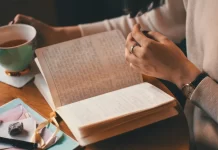Egon Schiele, full name Egon Leo Adolf Ludwig Sciele, was an Austrian Expressionist painter who lived from the late 19th century till the beginning of the twentieth century (1890 – 1918). Egon was a mentee of the famous figurative painter Gustav Klimt.
His work is renowned for its intensity, unadulterated eroticism, and the numerous self-portraits he created, including naked ones. In addition, Schiele is recognized as one of the pioneers of Expressionism due to the contorted body shapes and the expressive line that define his paintings and sketches.
Schiele was greatly influenced by the German Art Nouveau style known as Jugendstil. Schiele prioritized expression over ornamentation, enhancing the line’s dramatic intensity with a feverish tension. From the start, he focused on the human form, and his honest, agitated portrayal of carnal topics created a stir. In this article, however, we will examine Egon Schiele’s life story about his love life, much more than his art.
Early Life
In Tulln, Lower Austria, Schiele was born in 1890. Adolf Schiele, the station master at the Austrian State Railways’ Tulln station, was born in Vienna in 1851 to Karl Ludwig Schiele and Aloisia Schimak. Egon Schiele’s mother Marie, née Soukup, was born in esk Krumlov (Krumau) in 1861 to Franz Soukup, a Czech father, and Aloisia Poferl, a German woman with Bohemian roots from Cesky Krumlov.
Schiele spent many hours drawing trains as a child because they enthralled him. As a result, his father felt compelled to discard his sketchbooks. Schiele relocated to the neighboring city of Krems when he was eleven years old to attend high school. Those around him perceived Schiele as a peculiar youngster. He did poorly in school, except for athletics and drawing, and he frequently participated in courses with younger students. He was quiet and reserved.
Additionally, he had incestuous impulses toward his younger sister Gertrude (also known as Gerti). His father had to kick down the door of a locked room they both were in at one time to observe what they were doing because he was aware of Egon’s behavior (only to discover that they were developing a film). Finally, when he was sixteen, without permission, he traveled to Trieste by rail with Gerti, then 12 years old, and spent the night with her in a hotel room.
Relationship With Gustav Klimt
Schiele looked for Gustav Klimt in 1907 because of his liberal mentoring of young artists. The young Schiele was particularly interested in Klimt, who bought his drawings, offered to trade them for a few of his own, set up models for him, and connected him with potential buyers. He also brought Schiele to the Secession-affiliated workplace for arts and crafts, the Wiener Werkstätte.
Klimt allowed Schiele to display some of Egon Schiele paintings at the Vienna Kunstschau in 1909, where he also came into contact with the works of Vincent van Gogh, Jan Toorop, and Edvard Munch. After being released from the restrictions of the Academy’s rules, Schiele started to investigate the human form and sexual behavior.
Adding Klimt’s decorative erotica and what some may refer to as “figurative distortions,” which included lengthenings, deformities, and sexual openness, took Schiele’s already audacious art to a new level. Schiele’s self-portraits, distinguished by their extraordinary level of emotional and sexual honesty and use of figurative distortion in place of conventional notions of beauty, contributed to the restoration of the vigor of both genres. Along with landscapes and still lifes, he also produced homages to Van Gogh’s Sunflowers.
Imprisonment
Egon Schiele and his wife, Wally Neuzil, moved to Neulengbach, located 35 kilometers (22 miles) west of Vienna, looking for an affordable studio space with inspiring surroundings. Instead, Schiele’s studio became a gathering spot for Neulengbach’s troubled kids, just as it had in the city. Schiele was arrested in April 1912 for courting a young girl under the legal consent age of 14 because his lifestyle had caused great hostility among the locals.
More than 100 drawings that the police deemed pornographic were taken when they raided Schiele’s studio to arrest him. While he awaited his trial, Schiele was detained. The allegations of seduction and kidnapping were dismissed when his case went before a judge. Still, the artist was convicted of displaying pornographic paintings in an area where kids might access them.
One of the offensive pictures was destroyed by the judge on a candle flame in front of the jury. He was sentenced to an additional three days in prison after accounting for the three weeks he had already spent in custody. Schiele produced 12 paintings while incarcerated that represent the challenges and anguish of being confined to a detention cell.
Egon’s Betrayal
The relationship between Neuzil and Schiele famously ended abruptly in April 1915 when Schiele decided to propose to Edith Harms, one of two more socially acceptable sisters who lived opposite the artist’s Vienna studio and had been introduced to the artist by none other than Neuzil.
In June of that year, they got married. Neuzil refused to agree to a deal that required her to go with him once a year while Edith stayed at home. She was never again seen by Schiele.
Schiele’s direct note to his friend and fellow art critic Arthur Roessler in early 1915, which stated, “I’m preparing to marry – most advantageously – probably not Wally,” has been the subject of decades of rumor and ridicule.
There was evidence that she remained in touch with his collectors and owned some Schiele artwork after the split. She must have enjoyed greater acceptance than previously believed.
Death
Schiele passed away at the age of 28 in 1918 due to the Spanish influenza epidemic, which claimed millions of lives worldwide. Schiele evaded being drafted for over a year, but now the Great War influenced his life and art.
Schiele was required to report for active duty in the army, where he was initially stationed in Prague, three days after his wedding. While Egon lived in a convention hall with his fellow conscripts, Edith traveled with him and stayed in a hotel in the city. Schiele’s commanding officer permitted them to communicate sometimes.
Vienna was affected by the Spanish flu epidemic that struck Europe in the fall of 1918 and claimed more than 20 million deaths there. On October 28, Edith passed away from the illness while she was six months pregnant. After his wife, Schiele passed away just three days later.
Conclusion
Egon Schiele was poised to be one of the greatest artists. Unfortunately, however, his life was tragically cut short by a disease that affected most of the world at the time.










